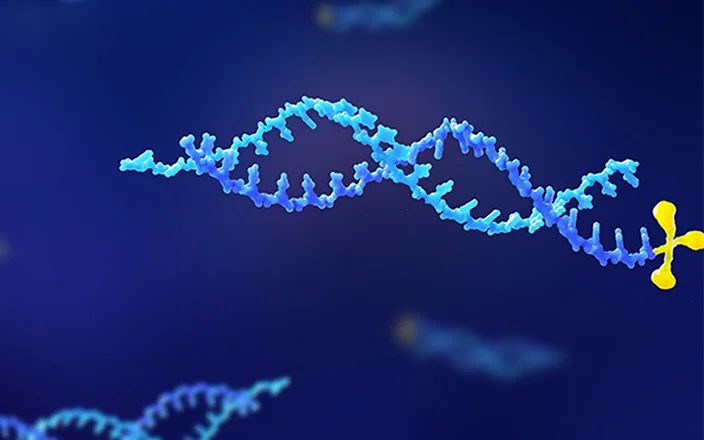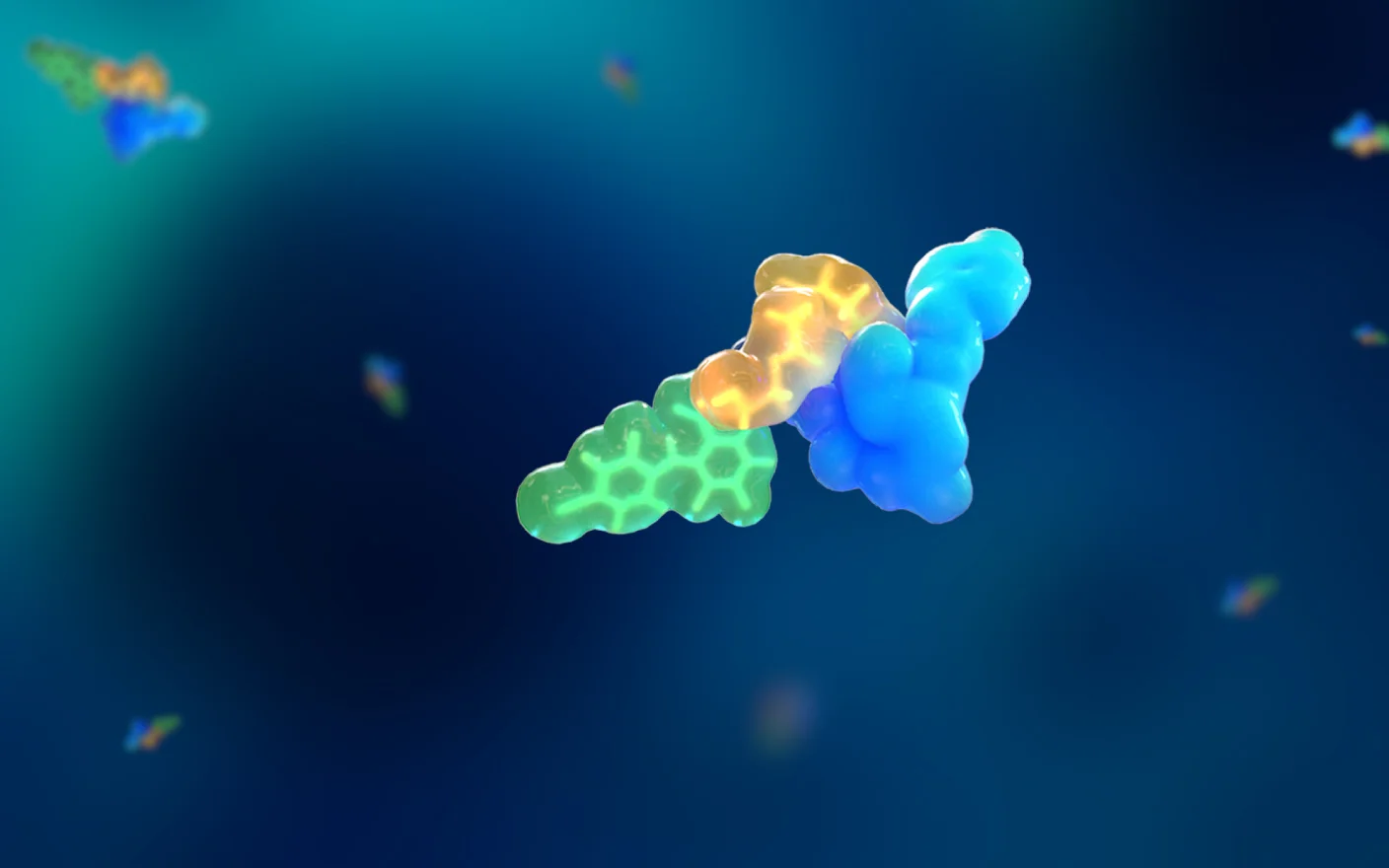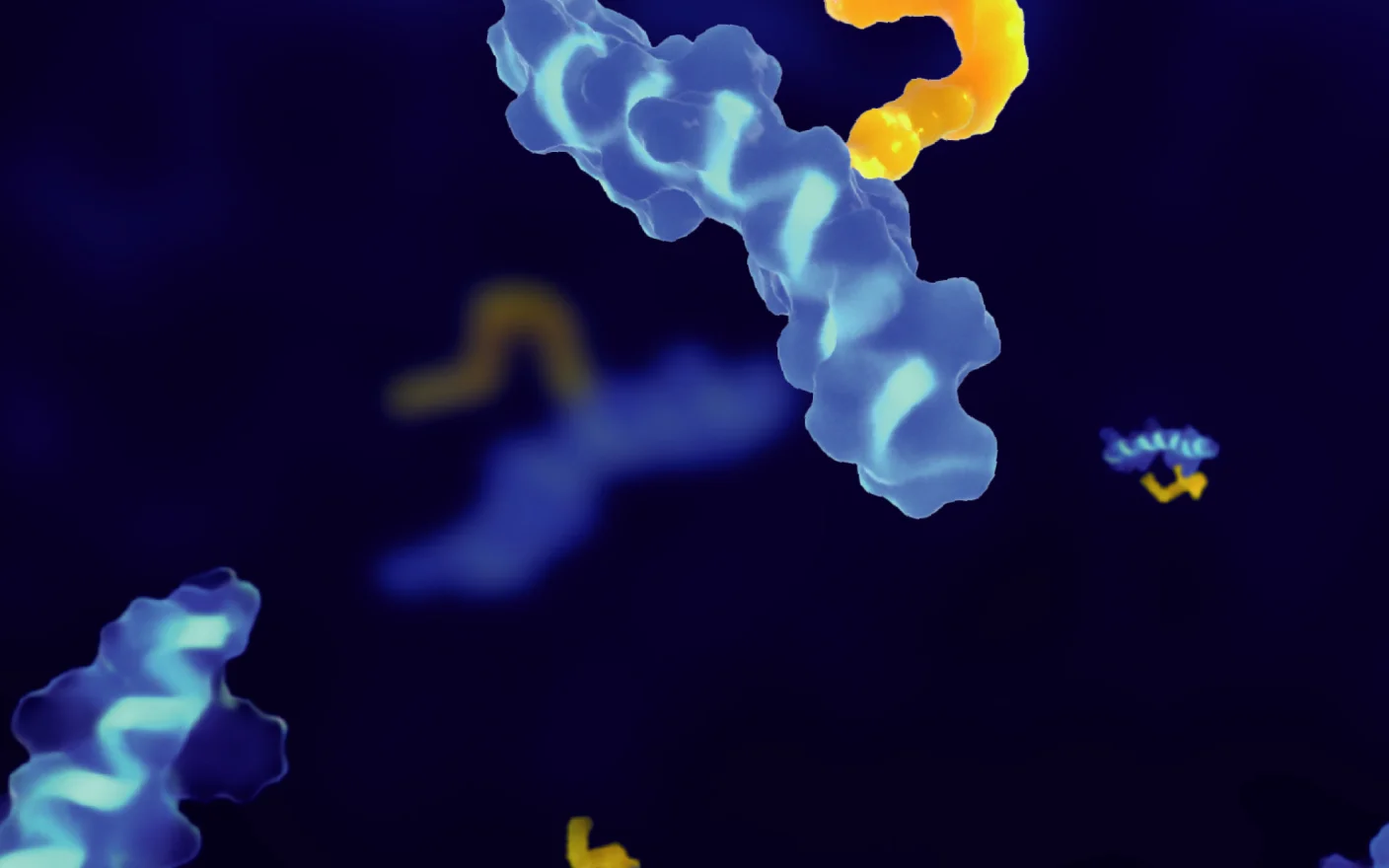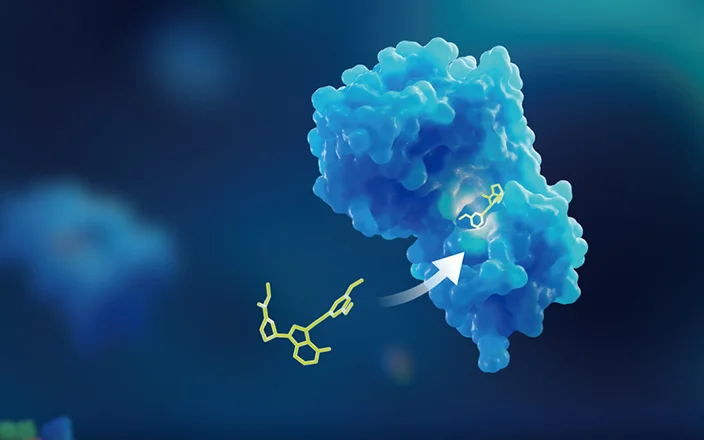Immunogenicity refers to the ability of a drug and/or its metabolites to induce immune responses or immune-related events against itself or related proteins[1]. The consequences of such immune reactions can range from the emergence of clinically insignificant anti-drug antibodies (AD As) to severe, life-threatening adverse events. Immunogenicity testing is integral to drug development, spanning the entire lifecycle from discovery and nonclinical studies to clinical trials and post-marketing surveillance. ADAs serve as the cornerstone for immunogenicity evaluation. Modern biologic therapies, including monoclonal antibodies (mAbs), fusion proteins, recombinant proteins, gene therapies, novel vaccines (e.g., mRNA vaccines), and cell therapies, represent emerging molecular modalities with inherent immunogenicity risks. This article delineates the principles of immunogenicity, its mechanisms, detection strategies aligned with FDA/EMA/NMPA immunogenicity guidance, and analytical challenges in ADA detection.
What is an anti-drug antibody?
Anti-drug antibodies (ADAs) are immune system-produced antibodies that specifically bind to therapeutic drugs, potentially altering their pharmacokinetics, efficacy, or safety. ADAs can be categorized based on their functions:
-
Binding antibodies: Attach to the drug without directly blocking its activity.
-
Neutralizing antibodies (NAbs): Inhibit the drug’s biological function by blocking target interaction.
ADAs are particularly concerning for biologic therapies due to their potential to trigger hypersensitivity, reduce drug efficacy, or cross-react with endogenous proteins.
Therapeutic protein drugs can elicit both innate and adaptive immune responses. Innate immunity is a nonspecific, non-memory defense mechanism that constitutes the first line of host defense. However, adaptive immunity—particularly humoral immunity mediated by B-cell-derived ADAs—is the primary focus of immunogenicity testing. As illustrated in Figure 1, ADA generation typically involves T-cell-dependent or T-cell-independent pathways. These pathways often interact, as immune complexes or aggregates can concurrently activate both mechanisms.

Figure 1. Mechanism of anti-drug antibody formation[2].
Factors influencing immunogenicity and its impact on drug development
Early therapeutic antibodies (e.g., murine-derived antibodies) exhibited a high immunogenicity risk due to their foreign origin. Advances in bioengineering—such as chimeric (mouse-human), humanized, and fully human antibodies—have mitigated but not eliminated immunogenicity risks[3]. Factors influencing immunogenicity are categorized as patient-related (immune status, genetic predisposition, pre-existing antibodies, dosing regimen, route of administration) and drug-related (product origin, structural integrity, aggregation, glycosylation, pegylation, impurity profiles, formulation, storage). The United States Pharmacopeia (USP) General Chapter <1106> stratifies these factors into low-, medium-, and high-risk categories (Table 1).
Table 1. Risk factors for immunogenicity [4].
|
Category |
Low risk |
Medium risk |
High risk |
|
Endogenous protein levels |
Abundant |
Limited |
Absent |
|
Patient immune status |
Immunosuppressed |
Normal |
Activated |
|
Exposure: dosing regimen and frequency |
Single dose |
Chronic/multiple doses |
Intermittent dosing |
|
Route of administration |
Intravenous/oral |
Subcutaneous/intramuscular/mucosal |
Intradermal/inhalation |
|
Product characteristics |
Minimal impurities (e.g., aggregates, degradation products), intact molecular structure |
Moderate impurities |
High impurities, novel epitopes (e.g., murine sequences, engineered mutations) |
Anti-drug antibodies can profoundly affect drug exposure, pharmacokinetics, efficacy, and toxicity. For instance, ADA-drug complexes may accelerate drug clearance, reduce half-life, or neutralize therapeutic activity. Severe cases may precipitate hypersensitivity reactions, autoimmune disorders, or immune complex deposition-related pathologies[5].
Immunogenicity testing: regulatory guidelines and strategies
For the detection of ADA, regulatory guidelines from the U.S. Food and Drug Administration (FDA), the European Medicines Agency (EMA), and the National Medical Products Administration (NMPA, China) advocate a tiered ADA testing strategy: screening, confirmatory, and characterization (Figure 2). Screening identifies potential positives, confirmatory assays validate specificity (e.g., competitive inhibition), and characterization evaluates titer, neutralizing activity, isotype/subtype, and epitope binding. Method validation parameters (e.g., screening cut-point, confirmatory cut-point, sensitivity, precision, selectivity, drug tolerance, specificity, robustness, reproducibility, and stability) align across guidelines, though NMPA/FDA immunogenicity guidance stipulates more granular requirements compared to EMA (Table 2).

Figure 2. Tiered approach for ADA testing [1].
Table 2. Validation parameters across regulatory guidelines [6-8].
|
Parameter |
NMPA (2021) |
FDA (2019) |
EMA (2017) |
|
Screening cut-point |
+ |
+ |
+ |
|
Confirmatory cut-point |
+ |
+ |
+ |
|
Sensitivity |
+ |
+ |
+ |
|
Drug tolerance |
+ |
+ |
+ |
|
Precision |
+ |
+ |
+ |
|
Specificity |
+ |
+ |
+ |
|
Selectivity |
+ |
+ |
+ |
|
Hook effect |
+ |
+ |
- |
|
Minimum required dilution (MRD) |
+ |
+ |
+ |
|
Reproducibility |
+ |
+ |
- |
|
Robustness |
+ |
+ |
+ |
|
Stability |
+ |
+ |
- |
Note: +: with relevant parameters -: not mentioned
Notably, NMPA mandates in vitro cytokine release assays (e.g., IL-2, IL-6, TNF-α) for drugs targeting immune cells or Fcγ receptors, whereas FDA immunogenicity guidance/EMA provides limited guidance on such assays[1][6-8].
Platform and assay format selection for immunogenicity testing
Regulators require high sensitivity, specificity, robustness, and drug tolerance for anti-drug antibody detection. Common analytical platforms include enzyme-linked immunosorbent assay (ELISA), electrochemiluminescence (ECL), radioimmunoprecipitation assay (RIPA), and surface plasmon resonance (SPR). Table 3 compares the advantages and limitations of each platform.
Table 3. Analytical platform comparison for ADA detection
|
Platform |
Advantages |
Limitations |
|
Direct/indirect ELISA |
High throughput, cost-effective, automation-friendly |
High background noise, low drug tolerance (solid-phase ELISA), limited utility for low-affinity ADAs |
|
Bridging ELISA/ECL |
High specificity, low background, species-agnostic |
Inability to detect IgM, reduced sensitivity for low-affinity IgG4 |
|
Surface plasmon resonance (SPR)/biolayer interferometry (BLI) |
Real-time kinetic analysis, high drug tolerance |
High cost, moderate throughput, limited vendor support |
|
Radioimmunoprecipitation assay (RIPA) |
High sensitivity for high-affinity antibodies |
Radioactive waste, impractical for low-affinity ADAs |
In addition, the FDA reported in 2018 on the submission methods used over the previous five years. Among these, ADA testing predominantly utilized ECL and ELISA platforms, while neutralizing antibody testing (direct and bridging methods, see Figure 3) mainly relied on cell-based assays and competitive ligand-binding assays.

Figure 3. ELISA direct method

Figure 4. ECL bridging method
Case study:
An ECL bridging assay was validated for detecting ADAs in rats administered trastuzumab. The method demonstrated a sensitivity of 0.382 ng/mL and drug tolerance of 200 μg/mL (positive control: 500 ng/mL). Among 24 samples (6 rats, 8 timepoints), 8 screened positive, 4 confirmed positive, and titers ranged from 10,200 to 68,000 (Table 4).
Table 4. Summary of test results
|
Samples |
Screening negative or positive |
Confirmatory negative or positive |
Titer |
|
R01 168h |
Negative |
/ |
/ |
|
R01 336h |
Negative |
/ |
/ |
|
R01 672h |
Negative |
/ |
/ |
|
R01 1008h |
Positive |
Negative |
/ |
|
R02 168h |
Negative |
/ |
/ |
|
R02 336h |
Positive |
Negative |
/ |
|
R02 672h |
Positive |
Positive |
40,800 |
|
R02 1008h |
Positive |
Positive |
68,000 |
|
R03 168h |
Negative |
/ |
/ |
|
R03 336h |
Positive |
Negative |
/ |
|
R03 672h |
Positive |
Negative |
/ |
|
R03 1008h |
Negative |
/ |
/ |
|
R04 96h |
Negative |
/ |
/ |
|
R04 264h |
Negative |
/ |
/ |
|
R04 504h |
Negative |
/ |
/ |
|
R04 840h |
Negative |
/ |
/ |
|
R05 96h |
Negative |
/ |
/ |
|
R05 264h |
Negative |
/ |
/ |
|
R05 504h |
Positive |
Positive |
10,200 |
|
R05 840h |
Negative |
/ |
/ |
|
R06 96h |
Negative |
/ |
/ |
|
R06 264h |
Negative |
/ |
/ |
|
R06 504h |
Negative |
/ |
/ |
|
R06 840h |
Positive |
Positive |
27,200 |
Note: / stands for the experiment was not performed.
Overcoming challenges in immunogenicity testing
Positive control antibodies are essential for assessing the performance of detection methods, directly influencing their sensitivity and drug tolerance levels. Choosing an appropriate positive control antibody is crucial for developing and validating ADA detection methodologies. Typically, polyclonal antibodies derived from immunized animals are used for this purpose.
Therapeutic protein drugs present significant challenges for immunogenicity assessment due to their high dosing and long half-lives, which can lead to elevated drug concentrations in circulation. This can interfere with ADA testing, as excess drug may bind to ADA, resulting in false-negative results. To enhance drug tolerance and minimize the risk of false negatives caused by free drug presence, various methods are employed in ADA analysis.
ADA can exist in two forms within a sample: free ADA and ADA-drug complexes. To reduce interference during ADA detection, sample pre-treatment is necessary. Factors such as the characteristics of each drug, detection objectives, risk assessment, sensitivity targets, operational complexity, and feasibility should be considered when selecting analytical methods. In Table 5, we compare the effects of different treatment methods on drug tolerance.
Table 5. Drug tolerance by the pre-treatment method
|
Pre-treatment method |
Drug tolerance (μg/mL) (PC: 250ng/mL) |
|
Acid dissociation |
20 |
|
Affinity capture extraction (ACE) |
50 |
|
Solid-phase extraction and acid dissociation (SPEAD) |
100 |
|
Bead-based extraction and acid dissociation (BEAD) |
500 |
|
Precipitation and acid dissociation (PandA) |
1,000 |
Additionally, for monoclonal antibody drugs, interference from soluble targets presents a significant challenge. Soluble dimers or multimers of drug targets can create bridges between two labeled drug molecules, leading to false-positive results for ADA. Conversely, if an antibody can only bind to one of the targets, steric hindrance may result in false-negative outcomes. A common approach to address this issue is to remove the soluble targets from the matrix. This is typically achieved using target inhibitors, usually corresponding anti-target antibodies, which bind to and eliminate the interference from the targets, thereby improving target tolerance [10].
A final word
Immunogenicity remains a pivotal challenge in the development of biologic therapies. Cross-disciplinary collaboration—spanning bioanalysis, immunology, pharmacology, and regulatory science—is essential for robust risk assessment. WuXi AppTec DMPK provides comprehensive preclinical bioanalytical support for immunogenicity, including ADA method development/validation for monoclonal/bispecific antibodies, antibody-drug conjugates (ADCs), oligonucleotides, and other biologics, ensuring compliance with FDA//EMA/NMPA requirements for investigational new drug (IND) submissions.
Authors: Miaomiao Song, Jie Liu, Xue Zhang, Maotian Zhou, Lili Xing
Talk to a WuXi AppTec expert today to get the support you need to achieve your drug development goals.
Committed to accelerating drug discovery and development, we offer a full range of discovery screening, preclinical development, clinical drug metabolism, and pharmacokinetic (DMPK) platforms and services. With research facilities in the United States (New Jersey) and China (Shanghai, Suzhou, Nanjing, and Nantong), 1,000+ scientists, and over fifteen years of experience in Investigational New Drug (IND) application, our DMPK team at WuXi AppTec are serving 1,600+ global clients, and have successfully supported 1,700+ IND applications.
Reference
[1] “Guidelines for the Study of Drug Immunogenicity” by the Center for Drug Evaluation(CDE) of the China National Medical Products Administration (NMPA), March 2021.
[2] Ulitzka M., Carrara S. C., Grzeschik J., et al. Engineering therapeutic antibodies for patient safety: tackling the immunogenicity problem[J]. Protein Engineering Design and Selection, 2020: 33
[3] Singh, Surjit, et al. "Monoclonal antibodies: a review." Current clinical pharmacology 13.2 (2018): 85-99.
[4] <1106> Immunogenicity Assays - Design and Validation of Immunoassays to Detect Anti-Drug Antibodies
[5] Michael Ulitzka, Stefania Carrara, Julius Grzeschik, Henri Kornmann, Björn Hock, Harald Kolmar, Engineering therapeutic antibodies for patient safety: tackling the immunogenicity problem, Protein Engineering, Design and Selection, Volume 33, 2020, gzaa025, http://doi.org/10.1093/protein/gzaa025
[6] Guidance for Industry Bioanalytical Method Validation. US Department of Health and Human Services, Food and Drug Administration, Center for Drug Evaluation and Research, Center for Veterinary Medicine. May 2018.
[7] Draft ICH Guideline M10-Bioanalytical Method Validation (EMEA/CHMP/EWP/172948/2019). March 2019
[8] EMA Guideline on bioanalytical method validation (EMEA/CHMP/EWP/192217/2009), adopted 21 July 2011
[9] Gunn GR, Sealey DC, Jamali F, Meibohm B, Ghosh S, Shankar G. From the bench to clinical practice: understanding the challenges and uncer⁃tainties in immunogenicity testing for biopharma⁃ceuticals[J]. Clin Exp Immunol, 2016, 184(2):137-146.
[10] Shao, X., Luo, W., Wang, H., et al. Challenges and Countermeasures of Soluble Target Molecules in the Bridging Method for Detecting Anti-Drug Antibodies of Biologics. Chinese Journal of Pharmacology and Toxicology, 2019, 33(11): 6. DOI: 10.3867/j.issn.1000-3002.2019.11.011.
Related Services and Platforms




-

 DMPK BioanalysisLearn More
DMPK BioanalysisLearn More -

 Novel Drug Modalities DMPK Enabling PlatformsLearn More
Novel Drug Modalities DMPK Enabling PlatformsLearn More -

 Novel Drug Modalities BioanalysisLearn More
Novel Drug Modalities BioanalysisLearn More -

 Small Molecules BioanalysisLearn More
Small Molecules BioanalysisLearn More -

 Bioanalytical Instrument PlatformLearn More
Bioanalytical Instrument PlatformLearn More -

 PROTAC DMPK ServicesLearn More
PROTAC DMPK ServicesLearn More -

 ADC DMPK ServicesLearn More
ADC DMPK ServicesLearn More -

 Oligo DMPK ServicesLearn More
Oligo DMPK ServicesLearn More -

 PDC DMPK ServicesLearn More
PDC DMPK ServicesLearn More -

 Peptide DMPK ServicesLearn More
Peptide DMPK ServicesLearn More -

 mRNA DMPK ServicesLearn More
mRNA DMPK ServicesLearn More -

 Covalent Drugs DMPK ServicesLearn More
Covalent Drugs DMPK ServicesLearn More
Stay Connected
Keep up with the latest news and insights.
















